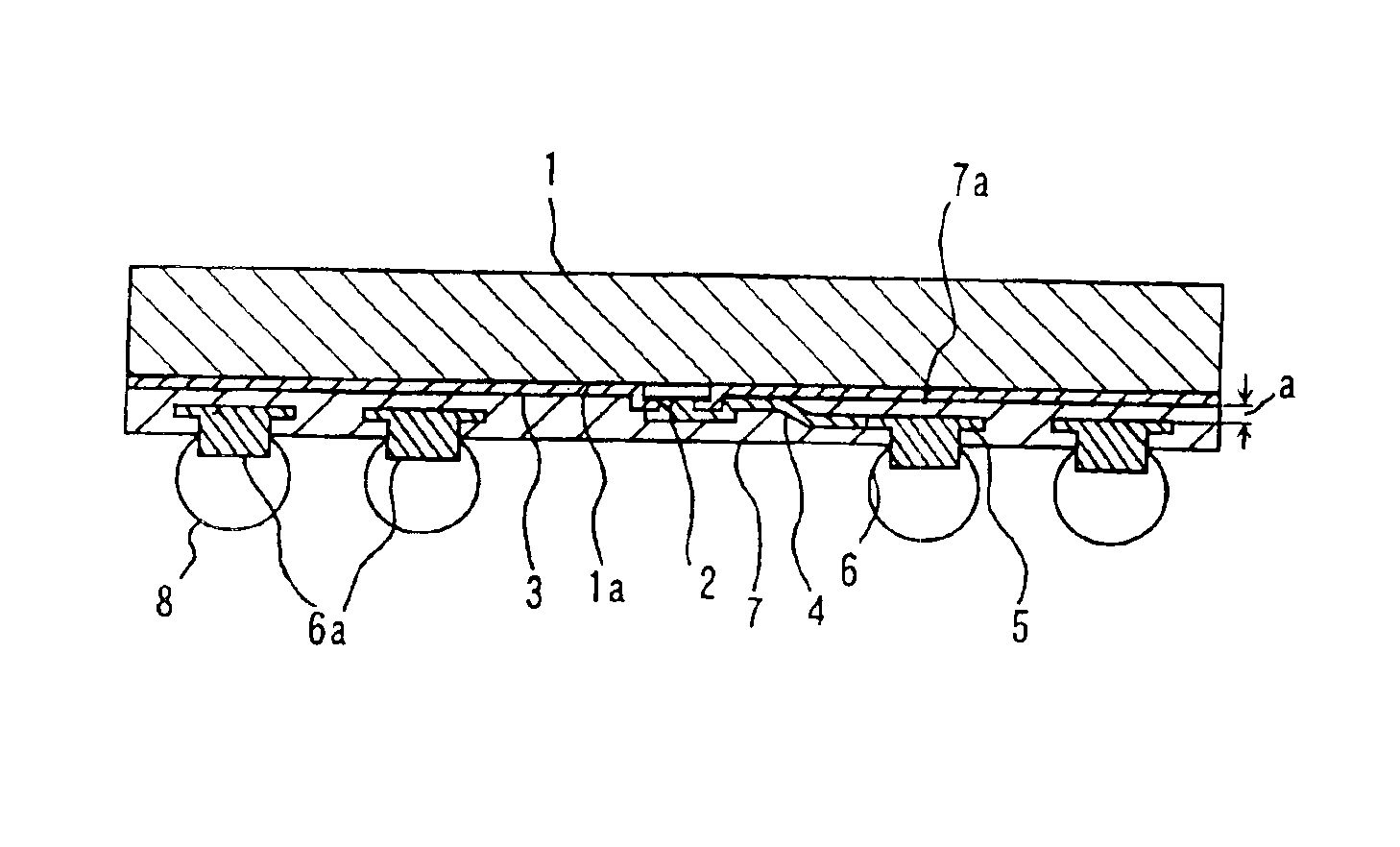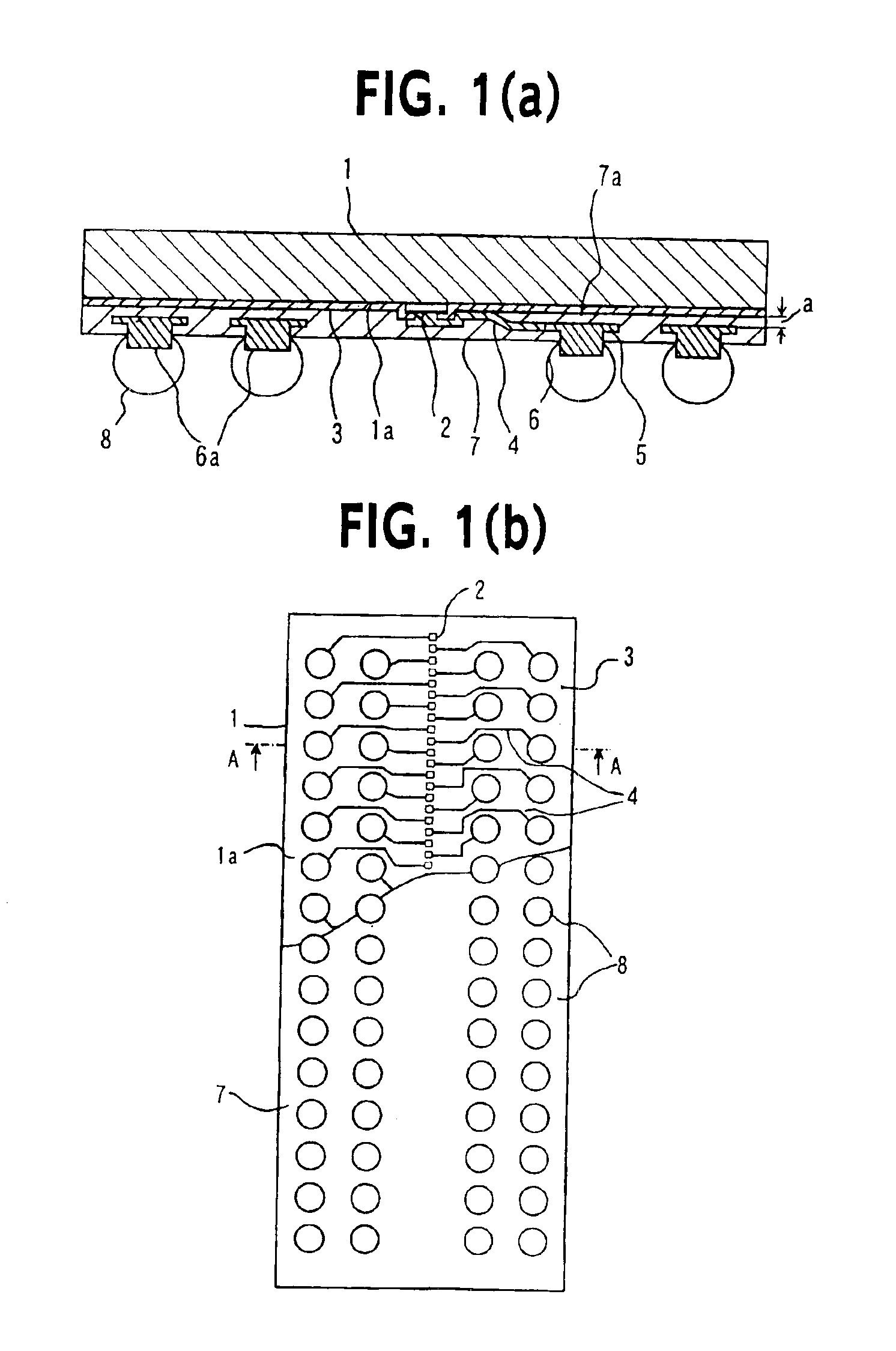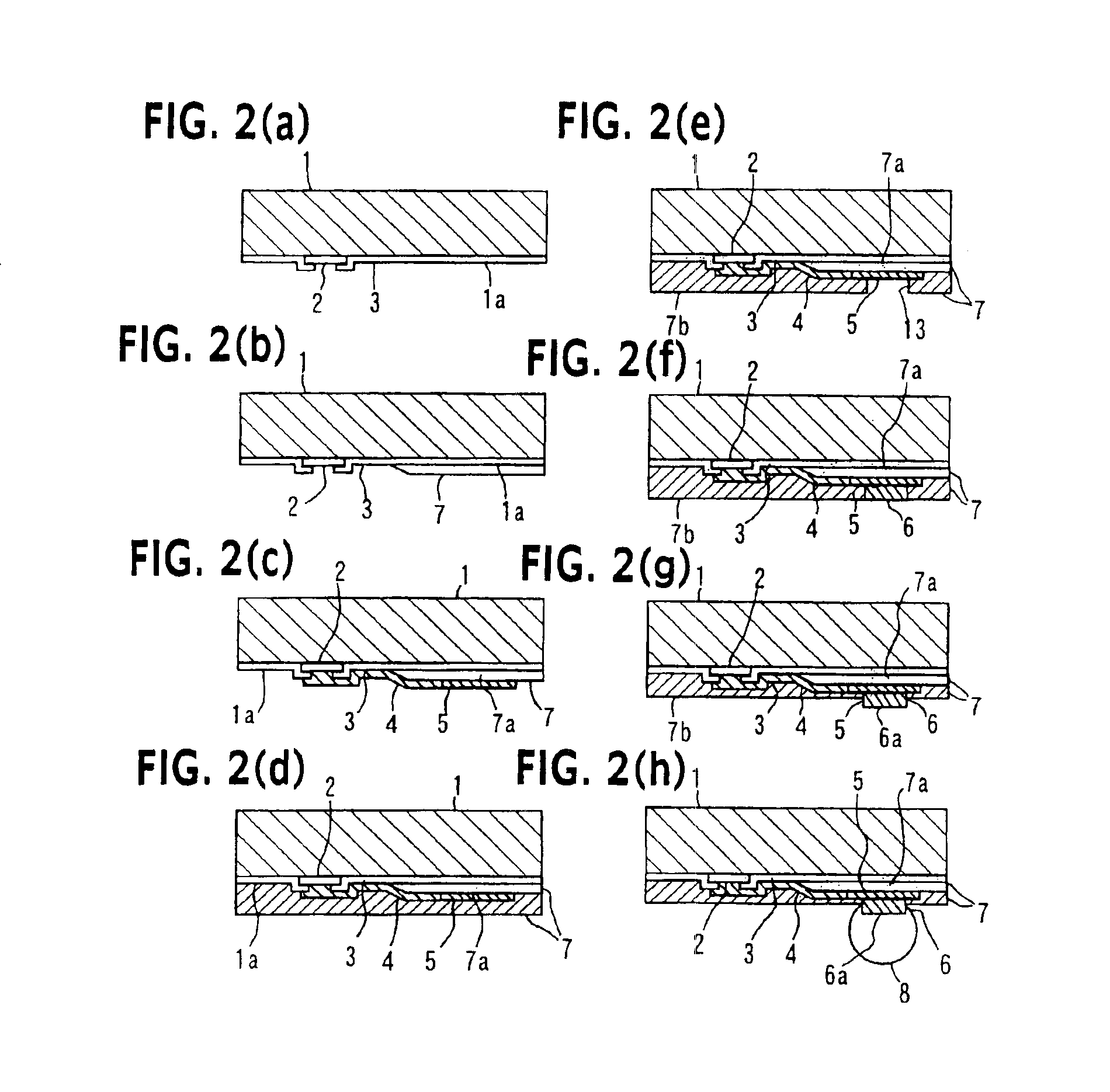Semiconductor device provided with rewiring layer
a technology of semiconductor devices and rewiring layers, applied in semiconductor devices, semiconductor/solid-state device details, electrical apparatus, etc., can solve the problems of increasing the bonding area of bumps, cracks may be formed in the bonding area, and the reliability of connection of solder bumps, so as to reduce the strain to be generated, increase the bonding area, and reduce the effect of elasticity
- Summary
- Abstract
- Description
- Claims
- Application Information
AI Technical Summary
Benefits of technology
Problems solved by technology
Method used
Image
Examples
first embodiment
[0059]FIG. 1(a) is a cross sectional view showing a semiconductor device according to the invention. FIG. 1(b) is a plan view of the semiconductor device shown in FIG. 1(a) with a portion of a protective film being removed. The cross sectional view of FIG. 1(a) is a view taken along line A—A shown in FIG. 1(b).
[0060]As shown in FIGS. 1(a) and 1(b), the semiconductor device of the first embodiment of this invention has a semiconductor element 1, a passivation film 3 formed on the surface 1a of the semiconductor element and exposing the surfaces of each pad 2, a conductive wiring line 4 connected to each pad 2, a land 5 connected to each conductive wiring line 4, a protective film 7, a projection 6 formed on each land 5, and external terminals 8.
[0061]The pads 2 are disposed vertically in the central area of the surface 1a of the semiconductor element. The conductive wiring line 4 connected to each pad 2 extends to the land 5 on the semiconductor element surface 1a on which the projec...
second embodiment
[0090]FIG. 5 is a cross sectional view of a semiconductor device according to the invention.
[0091]The fundamental structure of the semiconductor device of the second embodiment of the invention shown in FIG. 5 is similar to the first embodiment shown in FIG. 1. A different point from the first embodiment resides in that a portion 6b of a projection 6 surrounded by a protective film 7 is narrower than a protruded portion 6a to be bonded to an external terminal 8 so that an intervening portion 7c of the protective film 7 exists in a projected area of the protruded portion 6a of the projection 6.
[0092]According to the semiconductor device of the second embodiment of the invention, the intervening portion 7c of the protective film 7 exists in a projected area of the protruded portion 6a of the projection 6. Therefore, deformation of the external terminal 8 to be caused by a coefficient of linear thermal expansion difference between the semiconductor device and printed circuit board can ...
third embodiment
[0096]FIG. 7 is a cross sectional view showing a semiconductor device according to the invention.
[0097]As shown in FIG. 7, the semiconductor device of the third embodiment of this invention has a semiconductor element 1, a passivation film 3 formed on the surface 1a of the semiconductor element and exposing the surfaces of each pad 2, a conductive wiring line 4 connected to each pad 2, a land 5 connected to each conductive wiring line 4, first and second protective films 7 and 15, and external terminals 8.
[0098]The pads 2 are disposed vertically in the central area of the surface 1a of the semiconductor element. The conductive wiring line 4 connected to each pad 2 is constituted of a first conductive wiring line 4a disposed on the semiconductor element surface 1a and a second conductive wiring line 4b connected to the land 5. The first protective film 7 is formed over the semiconductor element surface 1a, covering the passivation film 3 and first conductive wiring line 4a and a port...
PUM
 Login to View More
Login to View More Abstract
Description
Claims
Application Information
 Login to View More
Login to View More - R&D
- Intellectual Property
- Life Sciences
- Materials
- Tech Scout
- Unparalleled Data Quality
- Higher Quality Content
- 60% Fewer Hallucinations
Browse by: Latest US Patents, China's latest patents, Technical Efficacy Thesaurus, Application Domain, Technology Topic, Popular Technical Reports.
© 2025 PatSnap. All rights reserved.Legal|Privacy policy|Modern Slavery Act Transparency Statement|Sitemap|About US| Contact US: help@patsnap.com



